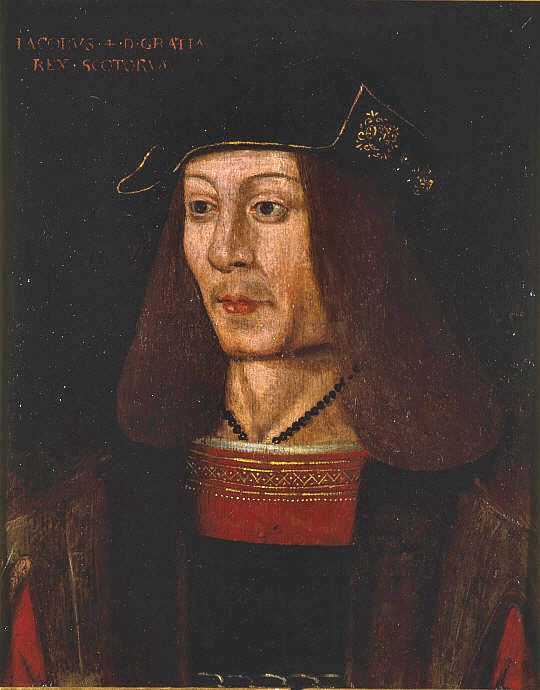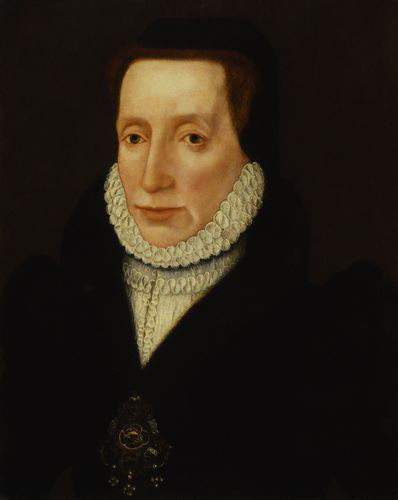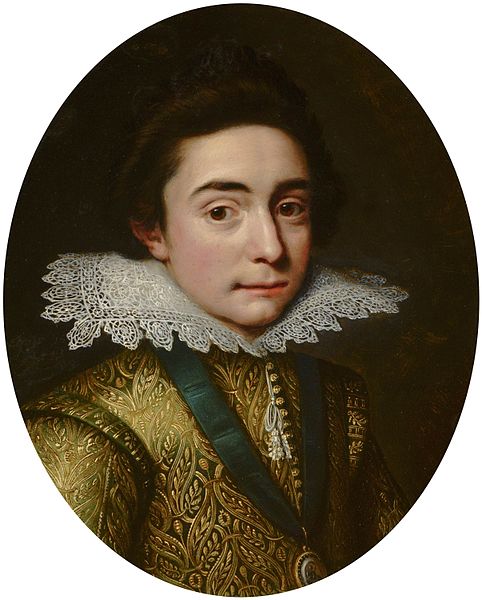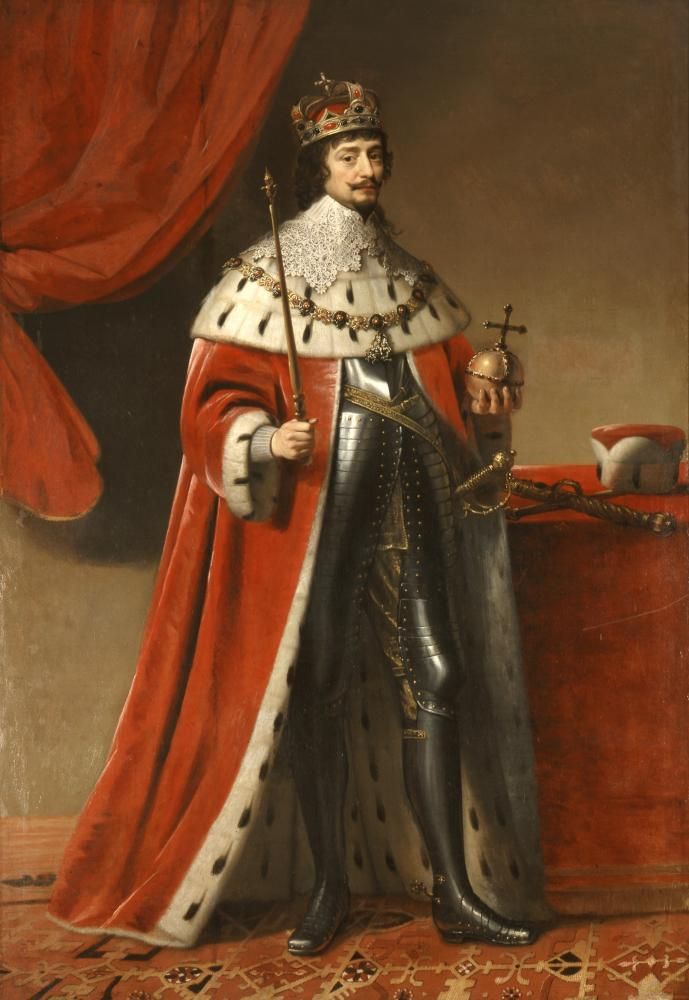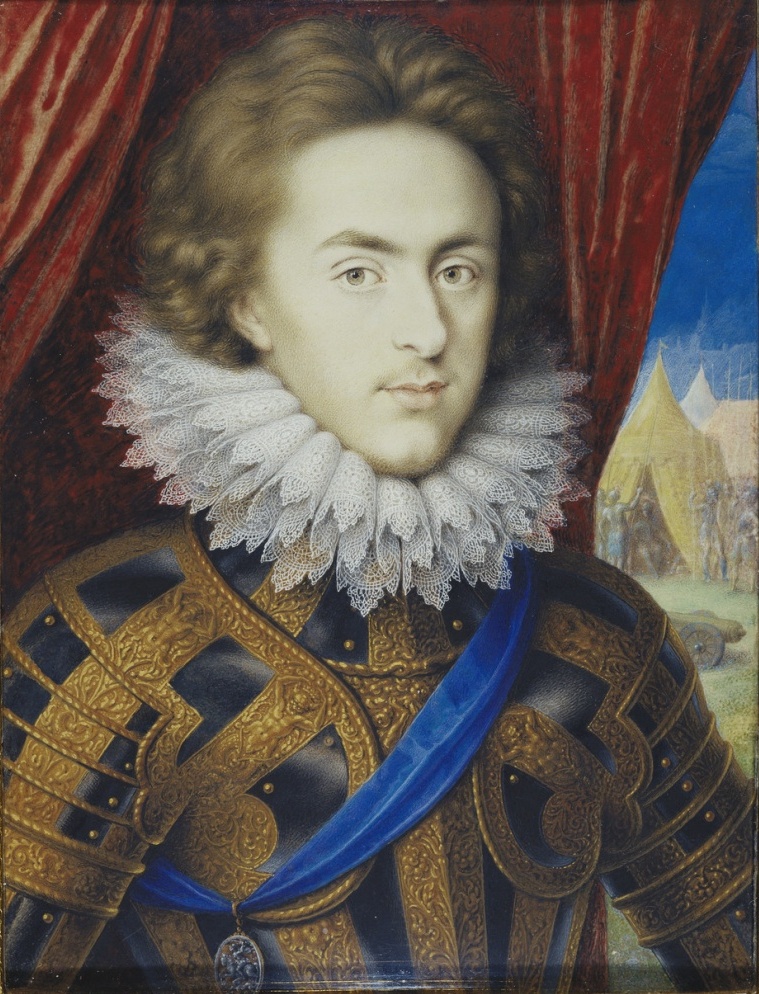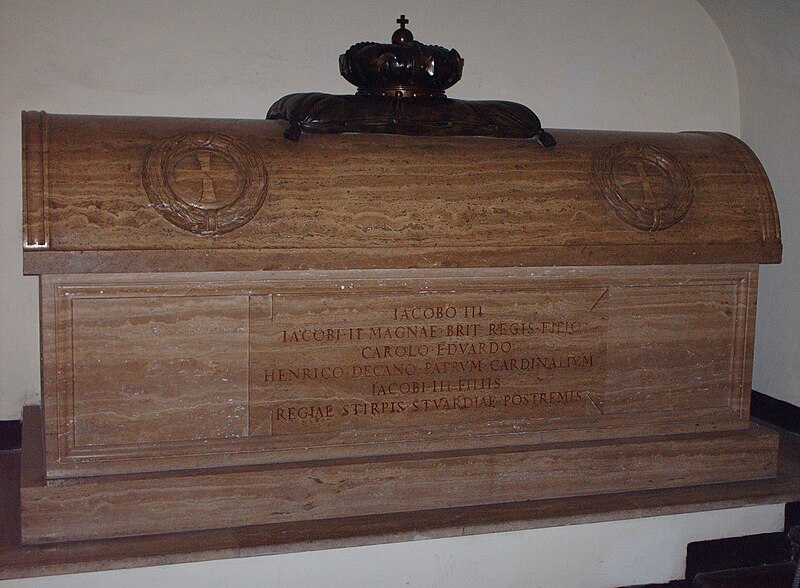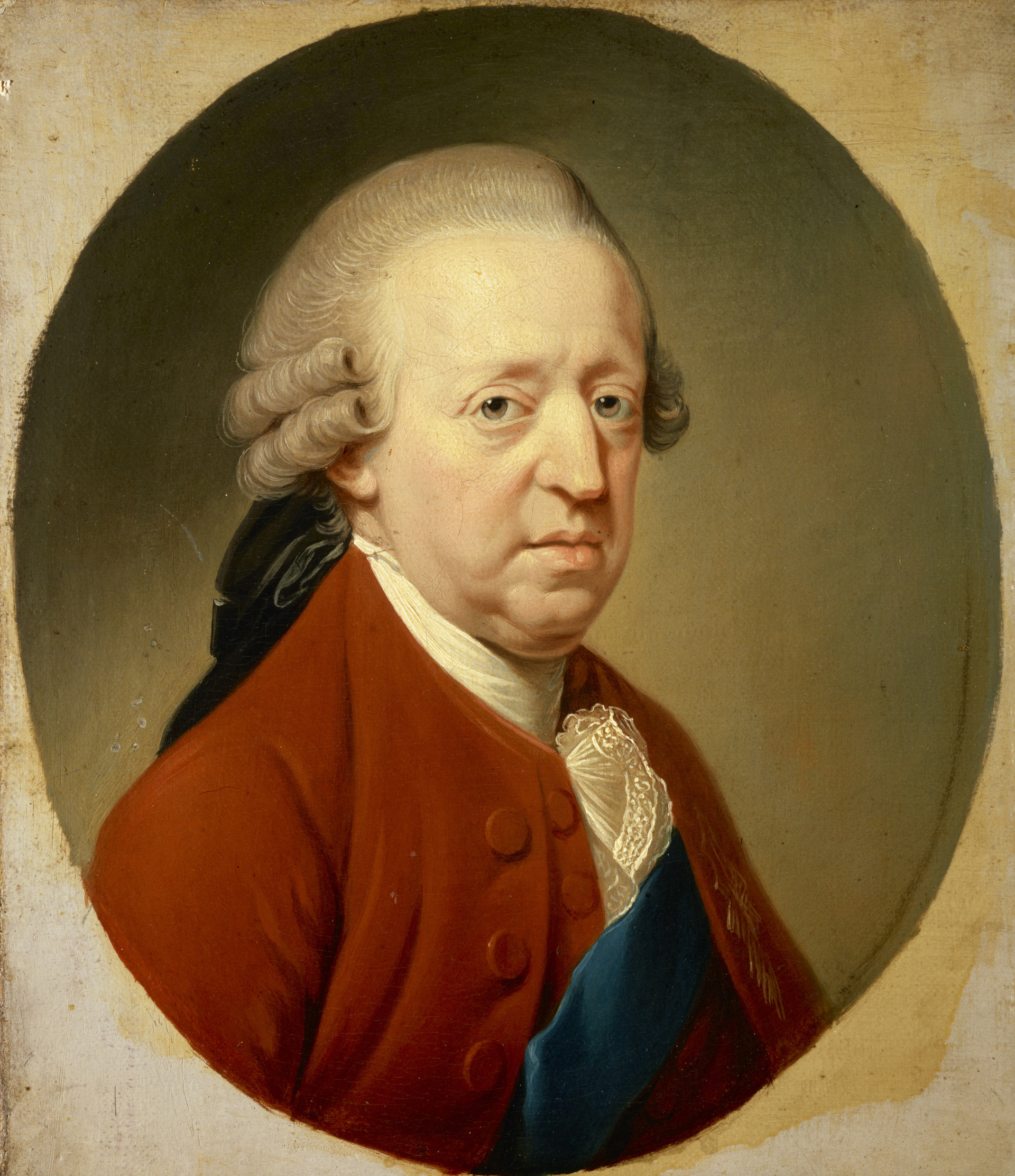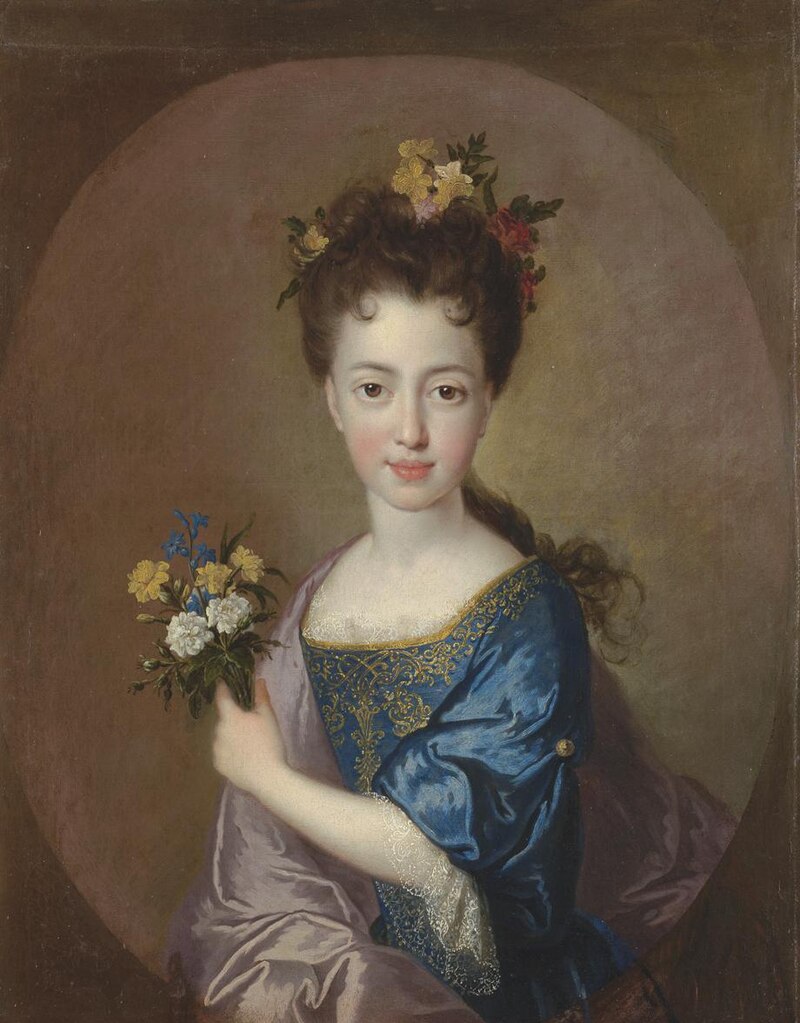by Susan Flantzer © Unofficial Royalty 2016

Mary Tudor, Queen of France, Duchess of Suffolk; Credit – Wikipedia
Mary Tudor was born on March 18, 1496, at Richmond Palace, then in Surrey, England. She was the third daughter and the fifth of the seven children of King Henry VII of England and Elizabeth of York, the eldest child of King Edward IV of England.
Mary had seven siblings, but only three survived early childhood:
- Arthur, Prince of Wales (1486 – 1502), married Catherine of Aragon, no issue
- Margaret Tudor (1489 – 1541), married (1) James IV, King of Scots, had issue including James V, King of Scots; (2) Archibald Douglas, 6th Earl of Angus, had issue; (3) Henry Stewart, 1st Lord Methven, no surviving issue; Margaret was the grandmother of both Mary, Queen of Scots and Henry Stuart, Lord Darnley, the parents of King James I of England
- Henry VIII, King of England (1491 – 1547), married (1) Catherine of Aragon, had daughter Queen Mary I of England; (2) Anne Boleyn, had daughter Queen Elizabeth I of England; (3) Jane Seymour, had son King Edward VI of England; (4) Anne of Cleves, no issue; (5) Catherine Howard, no issue; (6) Catherine Parr, no issue
- Elizabeth Tudor (1492 – 1495)
- Edmund Tudor, Duke of Somerset (1499 – 1500)
- Katherine Tudor (born and died February 1503) her mother, Elizabeth of York, died as a result of Katherine’s birth

Henry VII’s family: At left, Henry VII, with Arthur, Prince of Wales behind him, then Henry (later Henry VIII), and Edmund, who did not survive early childhood. To the right is Elizabeth of York, with Margaret, then Elizabeth who didn’t survive childhood, Mary, and Katherine, who died shortly after her birth; Credit – Wikipedia
Mary was raised with her older siblings Margaret and Henry at Eltham Palace in Greenwich, London, England, and was taught French, Latin, music, dancing, and embroidery. In 1501, Mary’s elder brother Arthur, Prince of Wales married Catherine of Aragon, the youngest daughter of Queen Isabella I of Castile and King Ferdinand II of Aragon. Five months later, on April 2, 1502, 15-year-old Arthur was dead, probably of sweating sickness, and his family was devastated. Shortly after Arthur’s death, Mary’s mother Elizabeth became pregnant again and hoped for a son. On February 2, 1503, she gave birth to a daughter, Katherine. Shortly after giving birth, Elizabeth became ill with puerperal fever (childbed fever) and died on February 11, 1503, her 37th birthday. Little Katherine died on February 18, 1503. In June of 1503, just a few months after her mother’s death, Mary’s sister Margaret left England to begin her married life in Scotland with her husband James IV, King of Scots. By the age of eight, Mary had already dealt with much loss.
In December of 1507, 11-year-old Mary was betrothed to four-year Charles, the future Charles V, Holy Roman Emperor, the eldest son of Philip the Handsome and Queen Joanna I of Castile. A month after her 13th birthday, Mary’s father King Henry VII died and her brother became King Henry VIII. Henry VIII was interested in a more permanent alliance with France. He initially considered marrying his now-widowed sister Margaret to the widowed King Louis XII of France. To his chagrin, Margaret secretly married Archibald Douglas, 6th Earl of Angus. Henry VIII broke off Mary’s engagement to Charles. Then he negotiated a peace treaty with France that included the marriage of 18-year-old Mary and the 52-year-old twice-married Louis XII who was eager to have a son to succeed him. Mary was not thrilled at the prospect of marrying a sick old man, especially since she was already in love with Charles Brandon, 1st Duke of Suffolk who had been brought up with Henry VIII in the court of King Henry VII. Mary made her brother promise that if she should survive Louis XII, she could choose her second husband.
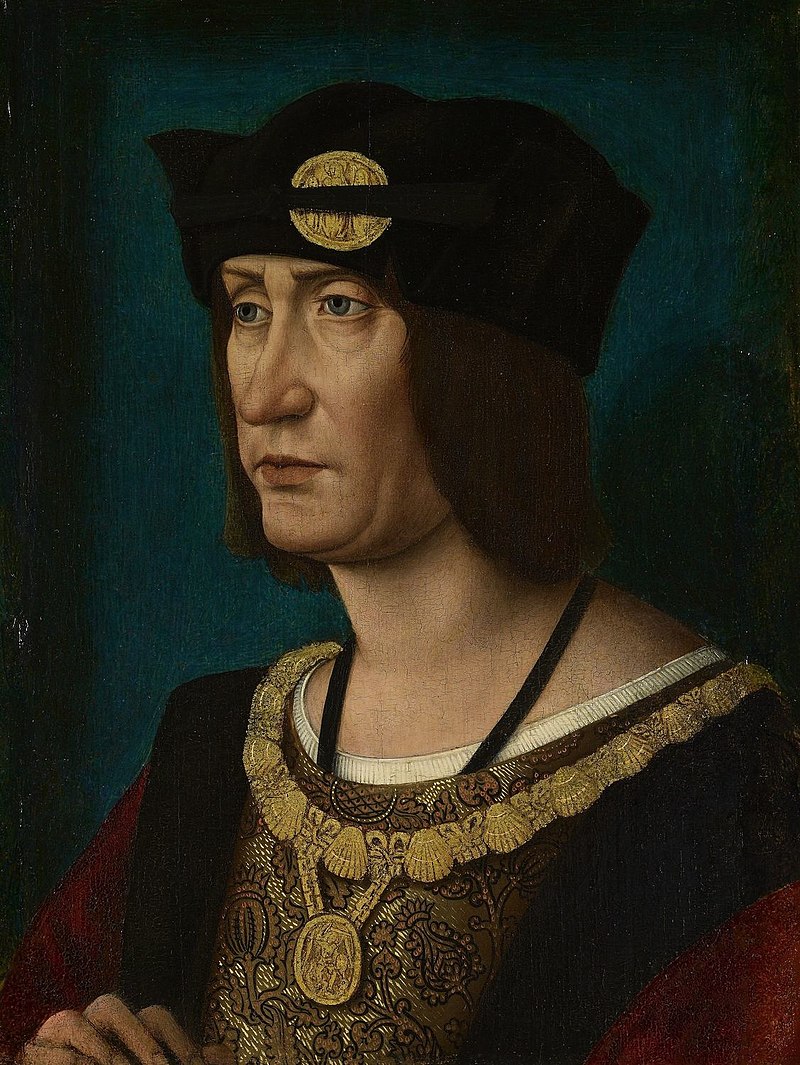
King Louis XII of France by Jehan Perréal, circa 1514; Credit – Wikipedia
There was a proxy marriage on August 19, 1514, at Greenwich Palace with Claude d’Orléans, Duke of Longueville standing in for Louis XII. Mary left for France on October 2, 1514. Louis XII met Mary on a rainy day at Abbeville, France near the mouth of the River Somme. They married in person at Abbeville on October 9, 1514. However, the marriage did not last long. Louis XII died on January 1, 1515, just three months after the wedding. As he had no son, he was succeeded by his son-in-law François d’Angoulême from the House of Valois -Angoulême as King François I of France.
Mary was aware that the new King of France would like her to marry a Frenchman to keep her dowry in France. However, she confided in King François I that she wished to marry Charles Brandon and he agreed to help her. First, Mary had to follow the French royal custom of a widowed queen observing a 40-day mourning period. She spent the mourning period at the Hôtel de Cluny in Paris with darkened windows and candlelight. She was also observed to see if she was pregnant with the future heir to the throne.
On March 3, 1515, Mary secretly married Charles Brandon at the Hôtel de Cluny in the presence of ten people including King François I. Mary and Brandon returned to England to face the wrath of her brother. Cardinal Thomas Wolsey managed to calm Henry VIII although some members of the Privy Council wanted Brandon imprisoned or executed. Mary and Brandon had to pay a £24,000 fine, approximately £7,200,000 today. Henry VIII later reduced the fine. The couple was married again in the presence of Henry VIII at the Grey Friar’s Church in Greenwich on May 13, 1515.

Mary Tudor and Charles Brandon by Jan Gossaert, circa 1515; Credit – Wikipedia
Mary and Brandon had four children:
- Henry Brandon (1516 – 1522)
- Lady Frances Brandon (1517 – 1559), married (1) Henry Grey, 3rd Marquess of Dorset, had issue including Lady Jane Grey; (2) Adrian Stokes, had three children who all died in infancy
- Lady Eleanor Brandon (1519 – 1547), married Henry Clifford, 2nd Earl of Cumberland, had issue
- Henry Brandon, 1st Earl of Lincoln (c. 1523 – 1534)
Mary and Brandon spent most of their time at Westhorpe Hall in Suffolk, England. Brandon’s daughters from his marriage to Anne Browne, Lady Anne Brandon, and Lady Mary Brandon, also lived there at Mary’s insistence. Mary got along well with her brother Henry VIII. However, in the late 1520s, their relationship became strained because Mary opposed Henry’s attempt to obtain an annulment of his marriage to Catherine of Aragon so he could marry Anne Boleyn. Mary had known Catherine for many years and had a great fondness for her, but had developed a strong dislike for Anne Boleyn when she served as one of her maids of honor in France.
Mary’s health began to suffer around the time Henry VIII and Anne Boleyn married. There were rumors that the coronation of Anne Boleyn on June 1, 1533, broke Mary’s heart. Mary died at Westhorpe Hall on June 25, 1533, at the age of 37, and was originally buried in the Abbey at Bury St. Edmunds. In 1538, when the Abbey at Bury St. Edmunds was dissolved during the Dissolution of the Monasteries, Mary’s coffin was brought to St. Mary’s Church in Bury St. Edmunds where it still rests in the crypt. The original grave slab survives and is in the sanctuary near the altar. There is also a later inscription and insignia on the wall and a marble curb given by King Edward VII which can be seen in the photo below. In the Lady Chapel, there is a stained glass window given by Queen Victoria depicting Mary’s life.

Original grave slab of Mary Tudor; Credit – www.britainexpress.com
This article is the intellectual property of Unofficial Royalty and is NOT TO BE COPIED, EDITED, OR POSTED IN ANY FORM ON ANOTHER WEBSITE under any circumstances. It is permissible to use a link that directs to Unofficial Royalty.
Works Cited
Abrufstatistik. “Mary Tudor (Frankreich).” Wikipedia. N.p.: Wikimedia Foundation, n.d. Web. 30 Oct. 2016.
De Lisle, Leanda. Tudor. Philadelphia: Perseus Books Group, 2013. Print.
“Mary Tudor, Queen of France.” Wikipedia. N.p.: Wikimedia Foundation, 19 Oct. 2016. Web. 30 Oct. 2016.
Susan. “Margaret Tudor. Queen of Scots.” English Royals. Unofficial Royalty, 29 Nov. 2016. Web.
Williamson, David. Brewer’s British Royalty. London: Cassell, 1996. Print.



